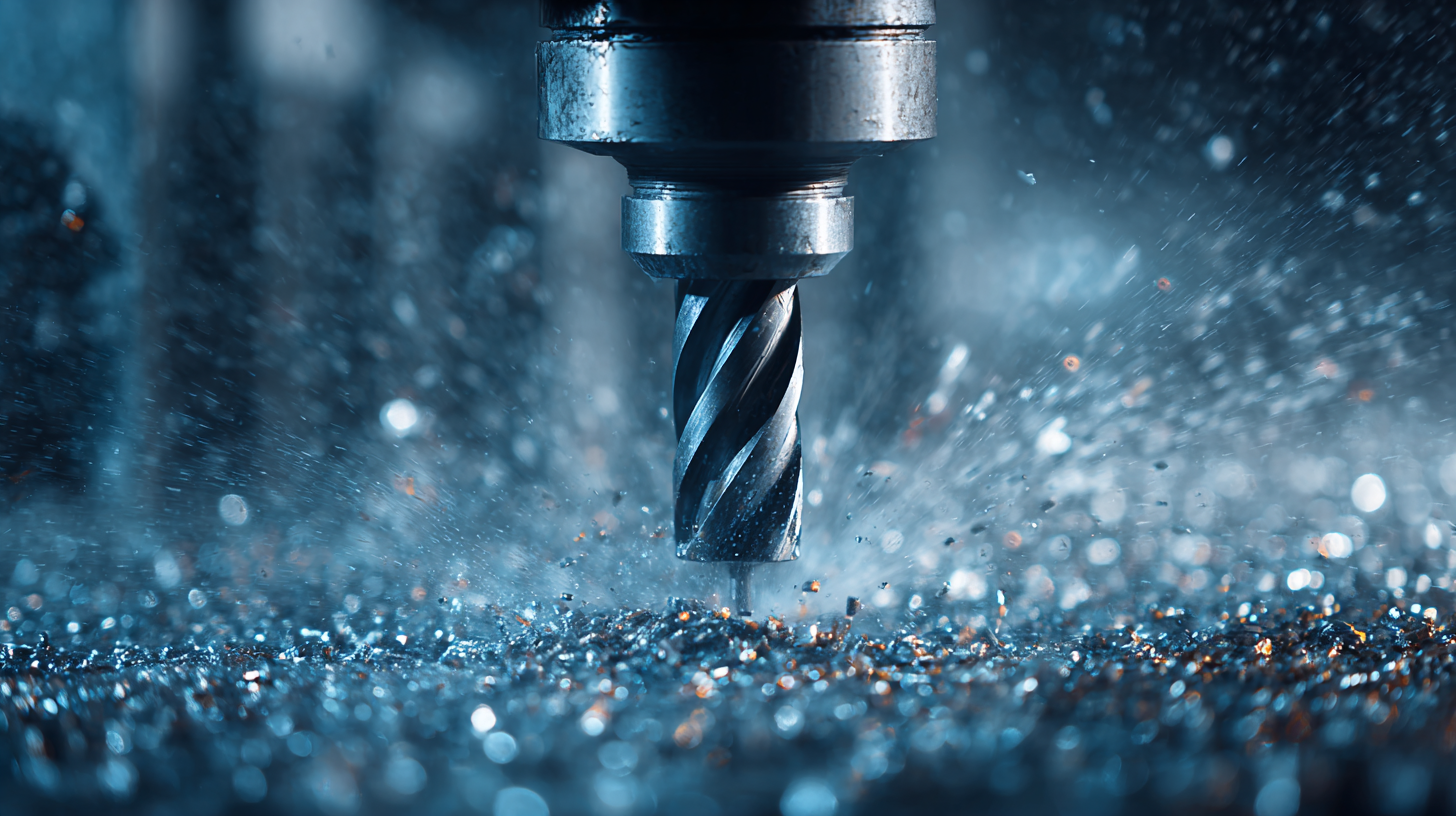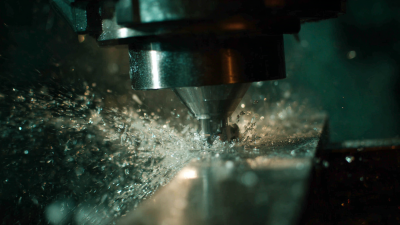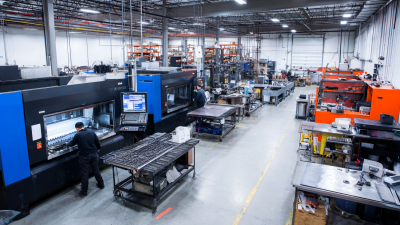Office USA: 706-658-1122 | Tech Support: 706-362-4813
Office Bulgaria: +359 431 64477
How to Choose the Right Diamond Tools for Optimal Cutting Efficiency Based on Industry Standards
In the competitive landscape of machining and construction, selecting the appropriate diamond tools is crucial for ensuring optimal cutting efficiency. According to a report by MarketsandMarkets, the global diamond tools market is projected to grow from USD 4.92 billion in 2021 to USD 7.05 billion by 2026, highlighting the increasing demand for high-quality cutting solutions across various industries. The efficiency of diamond tools is not only determined by their design but also by adhering to industry standards that dictate performance metrics such as wear rate and cutting speed. Studies reveal that utilizing the right diamond tool can boost productivity by up to 30%, making it essential for businesses to understand the factors influencing their choice. This article aims to provide a comprehensive guide on how to choose the right diamond tools based on industry benchmarks and practical applications, thus empowering users to make informed decisions that enhance their operational efficiency.

Understanding Diamond Tool Types and Their Applications
When selecting diamond tools for optimal cutting efficiency, it is essential to understand the different types of diamond tools and their specific applications.
 Diamond blades, often used in construction and masonry, are designed for cutting hard materials like concrete, stone, and asphalt. These blades come in various configurations, such as segmented, turbo, and continuous rim, each suited for different cutting tasks and materials, providing varying levels of precision and speed.
Diamond blades, often used in construction and masonry, are designed for cutting hard materials like concrete, stone, and asphalt. These blades come in various configurations, such as segmented, turbo, and continuous rim, each suited for different cutting tasks and materials, providing varying levels of precision and speed.
Another crucial category is diamond core bits, which are vital for drilling into hard substrates. They are essential in industries such as plumbing and electrical work, where precise holes are needed for pipes and wiring. Core bits are available in wet and dry varieties, with wet bits generally offering better cooling and reducing dust during operation. Understanding these types helps professionals select the right tool for their specific cutting or drilling needs, ensuring they adhere to industry standards while maximizing efficiency and productivity.
Key Factors to Consider for Optimal Cutting Performance
When selecting diamond tools for optimal cutting efficiency, several key factors must be considered to achieve superior performance. Firstly, the type of material being cut plays a crucial role in tool selection. Hard materials, such as granite or concrete, require diamond blades with specific bonding agents designed to withstand high abrasion and provide durability. Conversely, softer materials may necessitate a different grade of diamonds, offering a balance between cutting speed and tool longevity.
Another vital factor is the bond type used in the diamond tools. The bond affects the tool's wear rate and its ability to hold the diamond particles in place during cutting. A well-matched bond will ensure that the diamonds are exposed appropriately, crucial for maintaining cutting efficiency and minimizing downtime. Additionally, the grit size of the diamond particles can impact the finish of the cut. Finer grits produce smoother finishes, while coarser grits enhance cutting speed. Understanding these variables allows operators to choose the most suitable diamond tools tailored to their specific cutting needs, ultimately leading to improved performance and cost-effectiveness in operations.
Optimal Cutting Efficiency of Diamond Tools
This chart illustrates how different types of diamond tools perform based on their cutting efficiency, which is influenced by various key factors such as material hardness, grit size, and cutting speed.
Evaluating Diamond Quality: Grit, Bond, and Size
When selecting diamond tools for optimal cutting efficiency, it is crucial to evaluate the quality of the diamonds based on grit, bond, and size. Grit refers to the coarseness or fineness of the diamond particles, impacting the tool's cutting ability and surface finish. A finer grit is typically used for delicate work, while coarser grits are ideal for aggressive material removal. The bond type—whether it is resin-bonded, metal-bonded, or vitrified—also plays a key role in determining the wheel's performance and suitability for specific applications.
Recent testing has highlighted the performance differences between various bond systems in diamond wheels, revealing how certain combinations can enhance grinding efficiency. For instance, observations from tests on resin-bonded grinding wheels prepared with braze-coated diamond grits have shown promising results in terms of both preparation methods and grinding performance. The effectiveness of the diamond roll in achieving optimal results is influenced by the interaction of grit size and bond type, making proper selection essential for achieving the desired cutting results in various manufacturing sectors.
Aligning Tools with Industry Standards for Specific Materials
Choosing the right diamond tools is crucial for achieving optimal cutting efficiency, especially when specific materials are involved. According to a report by the International Diamond Tools Association, using tools that align with industry standards can enhance precision and reduce waste by up to 30%. For instance, diamond saw blades specifically designed for concrete can improve cutting speed by as much as 20% when compared to non-standard options. This not only increases productivity but also extends the tool's lifespan, offering better value for investment.
Different materials require tailored approaches, and selecting diamond tools that adhere to industry-determined specifications is key. For example, when cutting hard materials like granite, utilizing diamond tools with a higher concentration of diamonds, as recommended by the American Concrete Institute, can significantly improve cutting performance. Their studies show that tools made to conform to their standards can cut more effectively and with fewer defects, highlighting the importance of alignment between tool selection and material characteristics. Ultimately, leveraging industry insights and standards will lead to enhanced performance and reliability in diamond tool applications.

Maintenance and Care for Longevity of Diamond Tools
Effective maintenance and care for diamond tools are essential for ensuring their longevity and optimal performance in various cutting applications. Regularly inspecting tools for signs of wear or damage can help identify when maintenance is necessary. It's crucial to clean diamond tools thoroughly after each use, as debris and residue can negatively impact their cutting efficiency. Utilizing appropriate cleaning agents and techniques tailored to the specific type of diamond tool can further enhance their lifespan.
In addition to cleanliness, proper storage of diamond tools plays a vital role in their upkeep. Tools should be stored in a dry, cool environment to prevent corrosion and degradation. Implementing a routine inspection schedule can help in monitoring the condition of the tools and addressing any issues before they escalate. By prioritizing maintenance and care, users can not only extend the life of their diamond tools but also maintain optimal cutting efficiency, aligning with best practices and industry standards.
How to Choose the Right Diamond Tools for Optimal Cutting Efficiency Based on Industry Standards - Maintenance and Care for Longevity of Diamond Tools
| Tool Type | Application | Material Compatibility | Maintenance Tips | Expected Lifespan (hours) |
|---|---|---|---|---|
| Diamond Saw Blade | Cutting hard materials | Concrete, Stone, Asphalt | Clean after use, avoid overheating | 50-100 |
| Diamond Grinding Wheel | Surface preparation | Metal, Glass, Ceramic | Check for cracks, use proper speed | 30-70 |
| Diamond Core Bit | Drilling holes | Concrete, Brick, Masonry | Use water lubrication, clean regularly | 20-50 |
| Diamond Polishing Pad | Finishing surfaces | Marble, Granite | Use soft cloth, avoid excessive pressure | 40-80 |
Related Posts
-

Innovative Solutions for Enhanced Performance in Diamond Tools Industry
-

Top Strategies for Sourcing the Best Diamond Grinding Tools Globally: Insights and Data
-

Top Strategies for Maximizing Efficiency with Best Concrete Grinding Machines
-

Understanding the Top Features of Best Fabrication Equipment
-

Unveiling the Best Diamond Grinding Techniques: A Comprehensive Comparison for Professionals
-

Solutions for Achieving Perfect Finishes with the Best Polisher Machine
